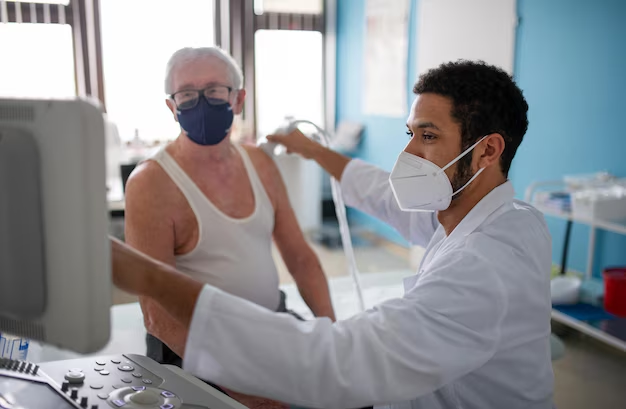Is Tuberculosis a Life-Threatening Illness? What You Need to Know
Imagine coughing persistently for weeks and feeling constant fatigue. For millions around the world, these symptoms could point to tuberculosis (TB), a disease that has gripped humanity for centuries. Is tuberculosis deadly? This question is as pressing today as it was hundreds of years ago. Let's explore the reality of TB, its global impact, the treatment landscape, and what you should be aware of to understand the gravity of this complex disease.
Understanding Tuberculosis: A Brief Overview
Tuberculosis is an infectious disease primarily affecting the lungs, caused by the bacterium Mycobacterium tuberculosis. While the lungs are its main target, TB can attack any part of the body, including the kidneys, spine, and brain. Transmission occurs through airborne particles, often when an infected person coughs or sneezes. But how deadly is it?
The Global Impact of TB
TB remains one of the top 10 causes of death worldwide. Each year, millions of new cases are reported, emphasizing the persistent challenge it presents to global health systems. Particularly in low- and middle-income countries, the disease burden is significantly higher, exacerbated by factors like poverty, lack of healthcare infrastructure, and HIV/AIDS.
- High-risk Areas: Sub-Saharan Africa, Southeast Asia, and Eastern Europe report the highest TB infection rates.
- Vulnerable Populations: People living with HIV, malnourished individuals, and those with weakened immune systems.
TB in the Modern World
Despite advances in medical science, TB continues to be a formidable adversary. The reasons are multifaceted:
- Drug resistance: Multidrug-resistant TB (MDR-TB) and extensively drug-resistant TB (XDR-TB) are challenges, requiring complex and prolonged treatments.
- Healthcare access: Inadequate access to healthcare services leads to untreated cases and continued transmission.
- Social determinants: Overcrowding, poor nutrition, and inadequate living conditions fuel TB spread in many communities.
Is Tuberculosis Deadly?
Mortality Rates and Statistics
TB can indeed be deadly, particularly if left untreated. According to the World Health Organization, almost 1.5 million people died from TB in 2020. However, it is important to note that TB is both preventable and curable with the right treatment plan.
Factors Influencing TB Mortality
Several factors can influence the deadly nature of TB:
- Delayed Diagnosis: Early-stage TB can be insidious, presenting mild symptoms often mistaken for other illnesses. Delays in diagnosis and treatment initiation can lead to severe complications.
- Drug-Resistant Strains: MDR-TB and XDR-TB do not respond to standard first-line treatments, making management more complex and outcomes less favorable.
- Co-infections: TB is particularly dangerous for people with weakened immune systems, such as those with HIV/AIDS.
- Socioeconomic Status: Poorer populations often have less access to healthcare and information, exacerbating the impact of TB.
Treatment and Management
Timely diagnosis and adherence to prescribed treatment regimens are critical to reducing mortality and effectively managing TB.
- Standard Treatment: Typically involves a 6-month course of antibiotics including isoniazid, rifampicin, pyrazinamide, and ethambutol.
- Drug-Resistant TB Treatment: Requires a specialized treatment plan, often longer and more intensive.
- Importance of Adherence: Non-adherence to treatment can lead to relapse and the development of drug-resistant strains.
The Fight Against Tuberculosis: Global Efforts
Prevention Strategies
Preventing TB is a crucial part of global health strategies, and several approaches have been employed:
- BCG Vaccination: The Bacille Calmette-Guérin (BCG) vaccine is widely used to protect against severe forms of TB in children.
- Public Health Campaigns: Raising awareness about TB transmission, symptoms, and treatment compliance.
- Screening Programs: Identifying and treating latent TB infections, especially in high-risk populations.
Research and Innovation
Research is ongoing to develop new TB vaccines, diagnostic tools, and treatments. The global health community is continually striving to combat TB through:
- Diagnostics: Rapid molecular tests that can provide quicker, more accurate diagnoses.
- Vaccines: Developing more effective vaccines that provide longer-lasting immunity.
- Treatment Regimens: New drugs and shorter, more effective treatment courses for resistant strains.
Practical Insights for Individuals
If you're concerned about TB, here are some practical insights and steps:
- Recognize Symptoms: Be aware of symptoms like a persistent cough, fever, night sweats, and unexplained weight loss.
- Seek Medical Attention: If you suspect a TB infection, seek medical advice promptly.
- Follow Treatment Plans: Strict adherence to TB treatment regimens is essential for recovery and preventing the spread of the disease.
- Support Public Health Measures: Participate in and support community health initiatives that aim to reduce TB transmission.
The Bigger Picture: A Multifaceted Challenge
Tuberculosis is more than a health concern; it's a social and economic challenge that affects millions of lives, particularly in vulnerable populations. Understanding TB's complexity, preventative measures, and the importance of timely intervention can help alleviate its impact.
The fight against TB is ongoing, involving collaborative efforts from governments, health organizations, and communities worldwide. With continued research, increased public awareness, and improved access to healthcare, there is hope for a future where TB is no longer a global threat.
Summary: Key Takeaways on TB 🦠
- Global Burden: TB remains a leading cause of death globally, especially in low- and middle-income countries.
- Preventable & Curable: With early detection and adherence to treatment, TB is preventable and curable.
- Drug Resistance Challenge: MDR-TB and XDR-TB are complicating treatment efforts.
- Vulnerable Populations: Particularly affects the immunocompromised, such as individuals with HIV.
- Prevention & Awareness: Public health efforts focus on vaccination, awareness, and timely treatment to curb TB spread.
By staying informed and proactive, you can play a part in combating tuberculosis's global impact.
